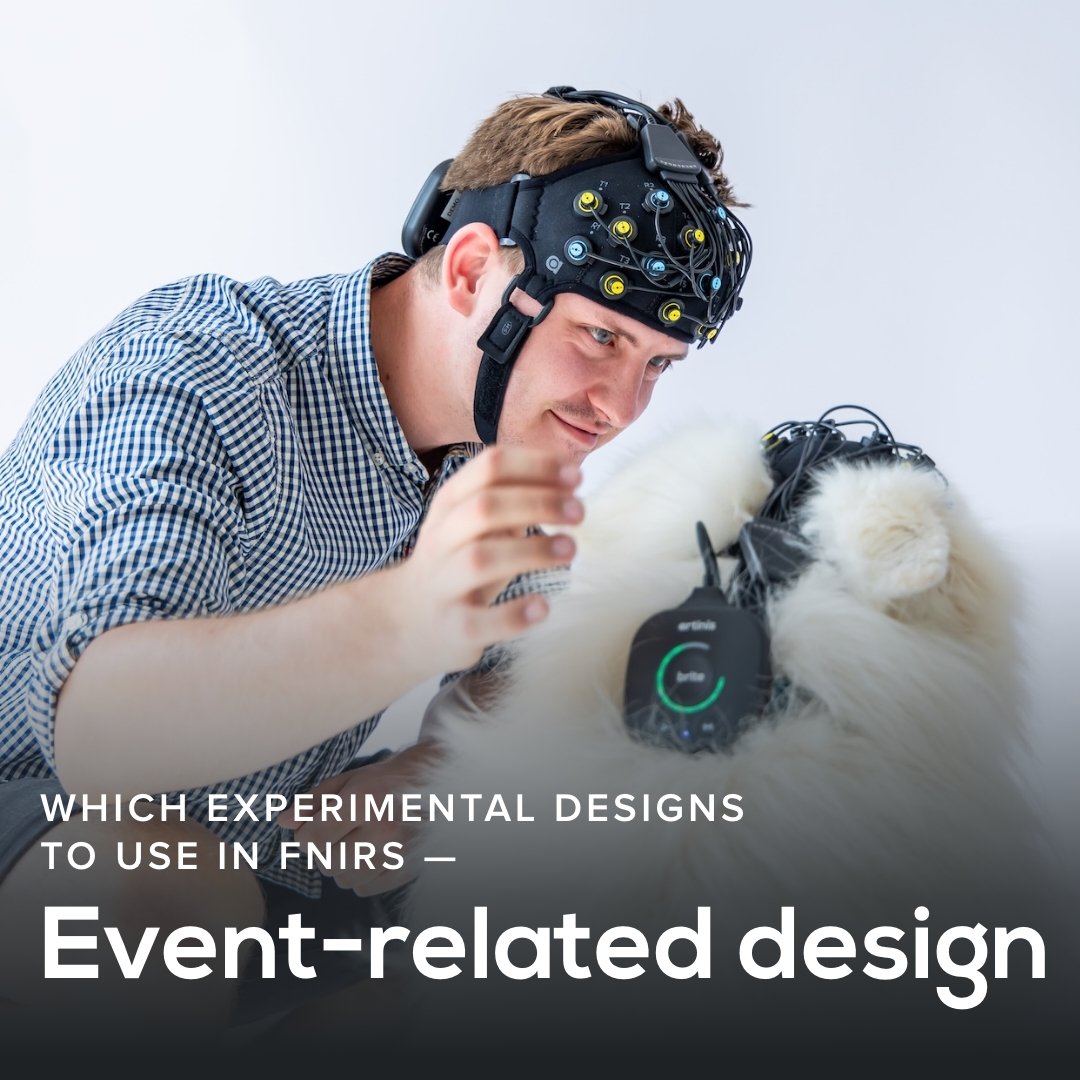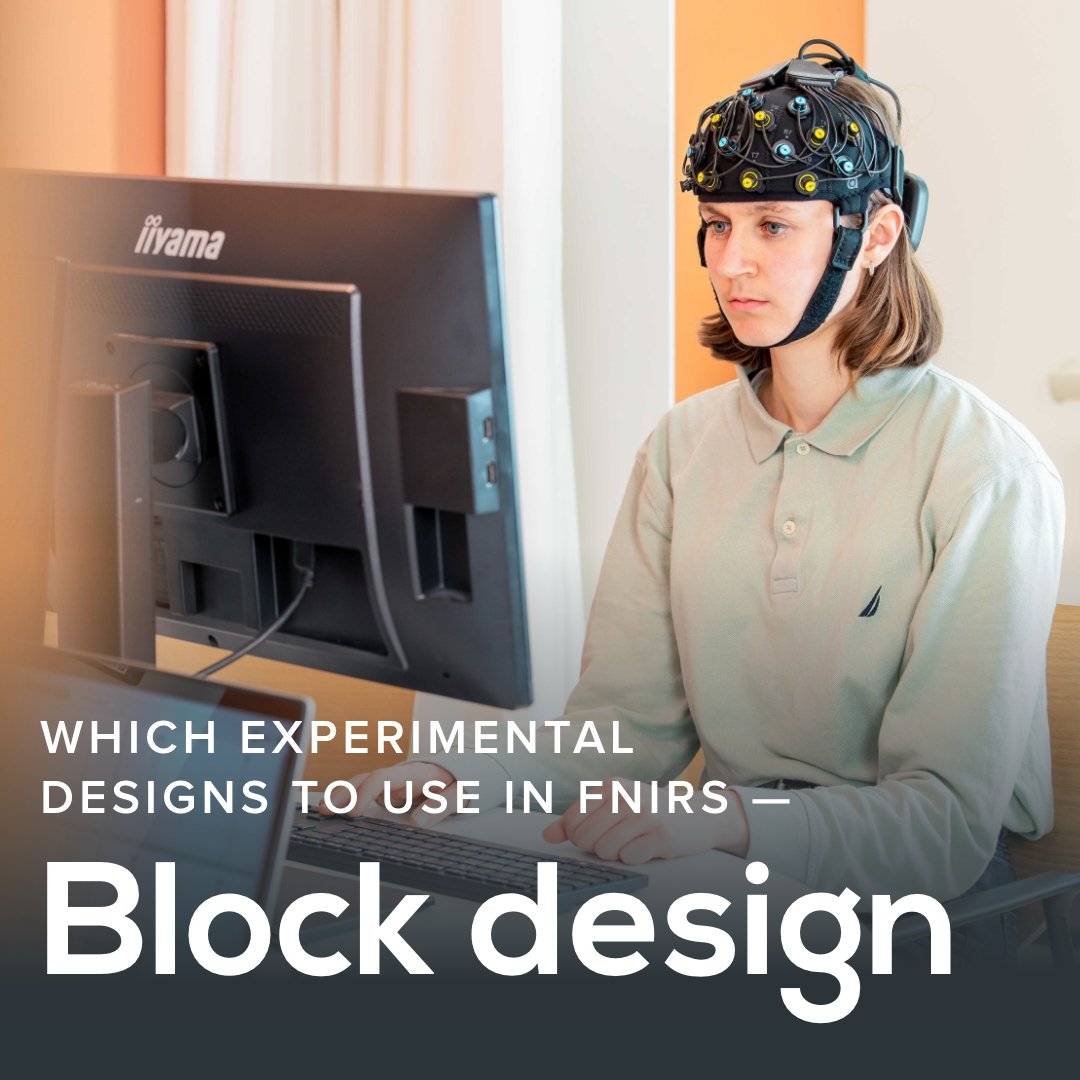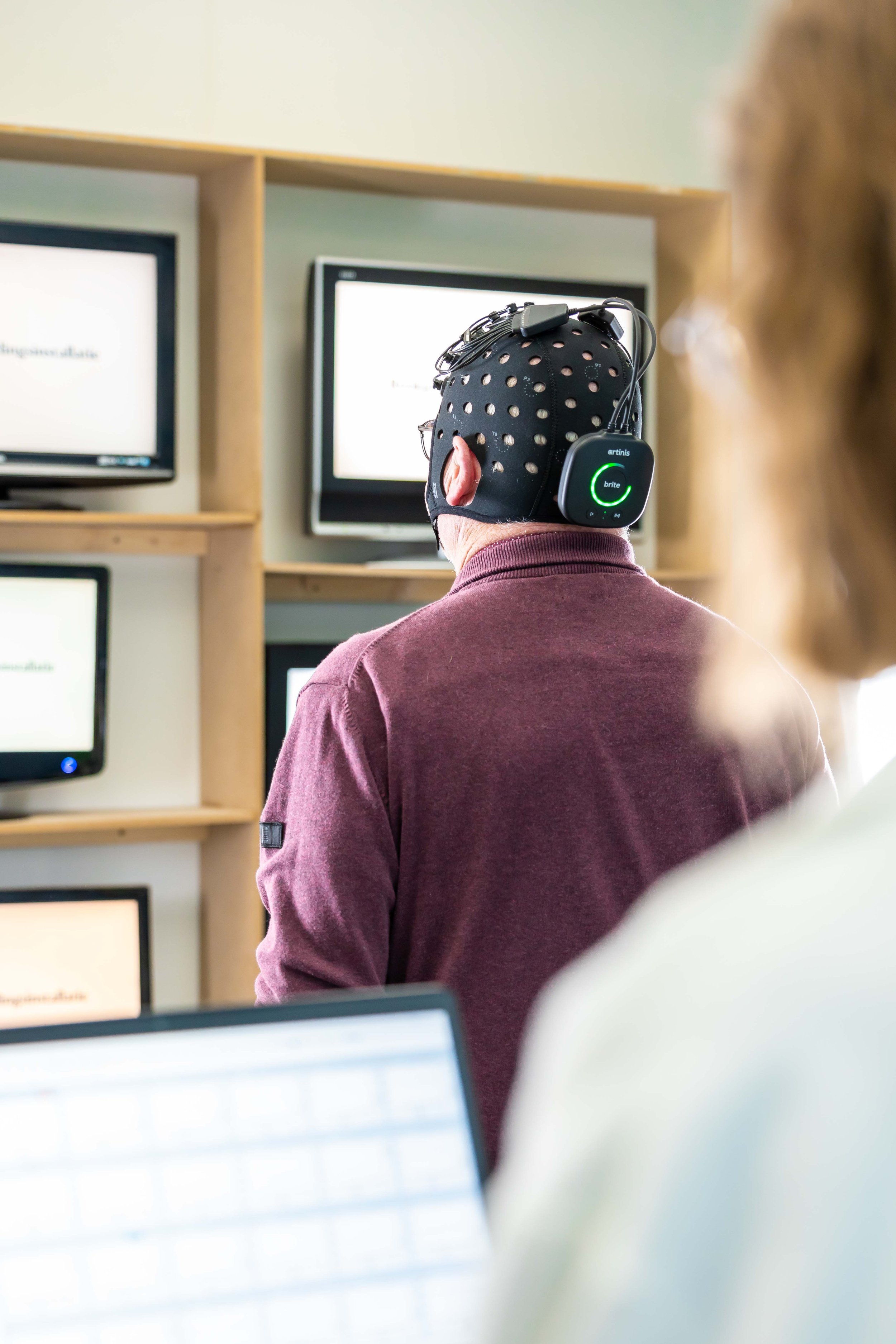Which experimental designs to use in fNIRS — Resting-state design
Defining and refining the correct experimental setup is one of the most important but challenging points when performing an fNIRS experiment. The right choice depends on various factors. In the first post of this blogpost series, we explained general important considerations for designing an fNIRS study. In the second blogpost, we focused on block design experiments, whereas the third post highlighted the event-related study design. In this blog post, we introduce the resting-state design and its application in fNIRS studies, and discuss advantages, considerations, and recommendations for fNIRS resting-state experiments.
What is a resting-state design experiment?
Compared to block design and event-related design, resting-state design experiments are characterized by measuring intrinsic brain activity without the performance of a task or presentation of stimuli. During resting-state experiments, low-frequency fluctuations (~ 0.1 Hz) in the hemodynamic response are recorded. Resting-state designs are commonly used to measure functional connectivity, defined as the temporal synchronization of brain activity in different brain regions. Hence, it helps to understand further the functional architecture of the brain and neural networks that are active during rest.
Application fields of resting-state design in fNIRS
As mentioned above, in fNIRS, resting-state studies can be used to investigate neural functional connections and give insights on how different brain regions work together, either on a local or a global (whole-head) level. Resting-state designs therefore find common application in areas where this might play a role, such as:
Developmental Neuroscience: To study the typical and atypical development of the brain in infants, toddlers and children
Clinical Research: To investigate abnormalities in functional connectivity and their potential as biomarkers in various neurological/neurodegenerative diseases (i.e. Stroke, Parkinson’s Disease)
Intervention Studies: To test the effects of physical activity/movement or cognitive training on neural activity and connectivity
Advantages of using resting-state design in fNIRS
As resting-state studies are task- and stimuli-independent, they enable studying spontaneous brain activity
Resting-state studies can be perfectly used to investigate global or local neural networks
Resting-state studies are relatively easy to perform, do not require a specific setup, and can be performed in various (calm) settings and with participants of all ages
Considerations & Recommendations when using resting-state design in fNIRS
Consideration: Choosing the correct study design and setting
Resting-state experiments are relatively easy to perform and, compared to block- and event-related designs, often come with fewer requirements and logistic considerations. However, certain points have to be kept in mind to ensure that the participants can be completely at rest and avoid wrong brain responses that might be caused by distracting factors or stimuli, i.e., noise or visual stimuli. Next to the measurement location, the setup, experimental procedure, as well as the positioning of the participant are important considerations for fNIRS resting-state experiments.
Recommendation: Perform your measurements in a quiet, light-dimmed, and comfortable setting
To avoid distraction by noise, it is recommended to perform resting-state experiments in a quiet setting and to prevent any noise during the measurement. Additionally, avoiding direct light can help to avoid visual distractions, as well as ambient light artifacts that can cause poor data quality.
The participant should be placed in a comfortable position, which can be either sitting or lying. To avoid motion artifacts, it can help to advise the participant to move as little as possible. During the measurements, subjects can have either eye closed or open. In the latter case, it might be recommended to use a fixation cross to avoid further distractions.
Consideration: Establishing a stable functional connectivity
Achieving a stable functional connectivity, and consequently, graph theory metrics, is crucial in resting-state studies and strongly depends on the duration of the measurement. Too short an experiment duration might lead to unstable responses, whereas too long a duration can be time-insufficient.
Recommendation: Choose an appropriate measurement duration
The appropriate duration may depend on the experimental setup, the measurement locations (local/global), as well as the type of participant. In recent years, some literature aiming to find recommended values for a minimum duration of fNIRS measurements at resting state was performed, for instance by Wang et al. in children.
Consideration: Sensitivity for physiological confounds
As discussed in previous blogposts of this series, physiological confounds such as heart rate and respiration, play a role in every fNIRS measurement and can influence data quality, leading to false positive and negative responses.
Recommendation: Choose appropriate filtering methods
Application of filters in post-processing is one way to reduce the influence of physiological confounds, which can occur at low-frequency oscillations. As mentioned above, resting state studies also focus on low-frequency fluctuations. Hence, it is important to choose the right filtering methods and cut-off values when handling physiological confounds.
In this blogpost, we discuss the application of resting-state design in fNIRS studies, discuss its advantages and considerations, and give recommendations for a successful performance of resting-state fNIRS experiments. If you have any specific questions regarding your experimental setup, please contact us at askforinfo@artinis.com.
Recommended Literature:
Albrecht F, Kvist A, Franzén E. Resting-state functional near-infrared spectroscopy in neurodegenerative diseases - A systematic review. Neuroimage Clin. 2025;45:103733.
Hu Z, Liu G, Dong Q, Niu H. Applications of Resting-State fNIRS in the Developing Brain: A Review From the Connectome Perspective. Front Neurosci. 2020 Jun 3;14:476.
Notte C, Alionte C, Strubakos CD. The efficacy and methodology of using near-infrared spectroscopy to determine resting-state brain networks. J Neurophysiol. 2024 Apr 1;131(4):668-677.
Wang J, Dong Q, Niu H. The minimum resting-state fNIRS imaging duration for accurate and stable mapping of brain connectivity network in children. Sci Rep. 2017 Jul 25;7(1):6461.


![[Brite MKIII] DualBrite-3.jpg](https://images.squarespace-cdn.com/content/v1/64e314a8c69b933a41187ec2/1755173610977-0BC16YMJFP2Y1DSRT2CF/%5BBrite+MKIII%5D+DualBrite-3.jpg)




Resting-state design using fNIRS can give information on neural networks and functional brain architecture, and is often used in developmental and clinical studies. In this blogpost, we discuss the characteristics, advantages, and considerations of resting-state experiments and give recommendations for successful fNIRS resting-state studies.